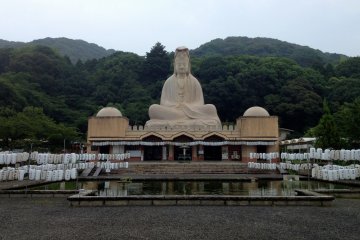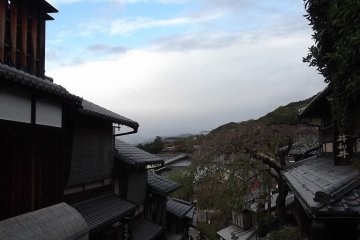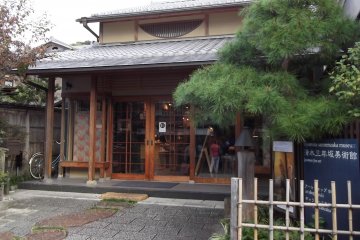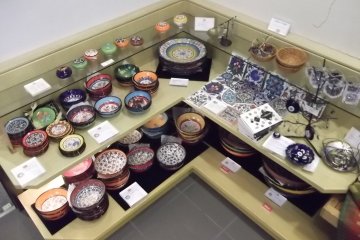Kyoto is known as a city of history and culture, with the hundreds of temples and shrines, the refined teahouses lining the old cobbled alleys of Gion, the reverence for tradition. It's also a city of traditional arts and crafts, with generations skilled in painting, calligraphy, cloisonne and carving; and a good place to enjoy a sampling of these crafts is the Kiyomizu Sannenzaka Museum.
It's in among the cafes and souvenir shops at the bottom of the steps on Sannenzaka slope, just down the hill from Kiyomizudera. You pay your entrance fee in the attached shop, then go through into the darkened exhibition rooms. The first floor houses pieces from the permanent collection, with a wide variety of items on display: detailed ivory carvings, including a turnip and a stunningly lifelike lobster; metalwork objects such as a playful pair of vases shaped like a carp and a monkfish leaping from the water; exquisite wood carvings, among them a cicada and a wasp inside a pear, with magnifiers allowing us to appreciate the level of tiny detail; objects of Kyoto Satsumaware pottery, again with magnifiers showing the tiny detail in the designs; and vividly colorful cloisonne (enameled metal objects) with beautiful designs, incense cases and perfume bottles decorated with flowers and butterflies. With the cloisonne there's an informative display of the materials and the painstaking process, with an explanation in English, and there's also a looped thirty-minute video with English subtitles giving explanations of some of the other crafts represented.
The upper floor houses special exhibitions, which when I was there was a display of screens embroidered with silk thread; the range of designs was captivating, from a semi-abstract screen of a young woman reading in orange light, to idyllic nature scenes with birds and flowers, pictures of exotic animals like tigers and lions, and more down-to-earth images, like a dog seizing a fleeing fox. Again, the level of detail and the skill of the embroiderers were breathtaking.
The shop at the front of the museum has a good range of souvenirs and other items for sale, among them ceramics, jewelry, cards and fabrics. The museum is also associated with Tsurado, a renovated Gion teahouse which offers traditional Kyoto cuisine and cultural events. Together, the teahouse and museum are a good way to experience all the culture that this city has to offer.












